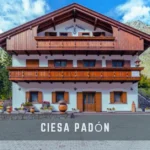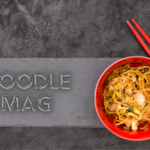Introduction to the Mamgatoto Cultural Phenomenon
Step into the vibrant world of Mamgatoto, a cultural phenomenon that weaves together history, tradition, and community. This captivating tapestry is not just an event but a living expression of identity and heritage. As you dive deeper into the rich customs surrounding Mamgatoto, you’ll discover stories that span generations—each thread adding to its depth and significance. From colorful rituals to communal celebrations, Mamgatoto embodies the essence of unity and belonging. Join us on this journey as we unveil the layers behind this extraordinary cultural experience!
The Origins and History of Mamgatoto
The origins of Mamgatoto are steeped in mystery and folklore. This vibrant cultural phenomenon traces back to the early communities that thrived along the banks of rivers, where nature played a vital role in daily life.
Historically, Mamgatoto emerged as a way for these communities to honor their ancestors and celebrate the changing seasons. Rituals often included songs, dances, and intricate storytelling that captured the essence of their experiences.
As generations passed, Mamgatoto evolved into a tapestry woven from various influences—tribal customs intermingling with modern interpretations. Each iteration brought new layers of meaning while remaining anchored in its roots.
Artifacts like handcrafted masks and colorful textiles tell tales of this rich history. They serve not only as decorative pieces but also as symbols connecting past traditions with contemporary expressions. The spirit of Mamgatoto continues to thrive through shared stories across diverse groups today.
Key Elements and Traditions of Mamgatoto
Mamgatoto is a vibrant tapestry woven from rich cultural threads, each element telling its own story. One of the most striking aspects is the traditional attire worn during celebrations. Bright colors and intricate patterns symbolize various community values.
Ritual dances are central to Mamgatoto festivities. They serve as both entertainment and a means to convey historical narratives. Each movement holds significance, often reflecting ancestral tales or life lessons.
Music plays an equally vital role in Mamgatoto events. Traditional instruments create rhythmic sounds that energize gatherings, encouraging participation from all ages.
Food also features prominently in these celebrations. Unique dishes are prepared using local ingredients, fostering a sense of community through shared meals and culinary heritage.
Together, these elements form a unique identity for Mamgatoto, connecting generations while honoring the past. The traditions not only enrich lives but also strengthen bonds within communities.
How Mamgatoto is Celebrated Today
Today, Mamgatoto thrives as a vibrant celebration that brings communities together. Festivities often include lively music, traditional dance performances, and colorful costumes that reflect the rich heritage of the culture.
Families gather to share meals steeped in history. Dishes are prepared using recipes passed down through generations. This culinary aspect plays a vital role in fostering connections among participants.
Workshops and exhibitions showcase handicrafts unique to Mamgatoto. Local artisans demonstrate skills that have been preserved over time. Visitors engage with these traditions firsthand, deepening their appreciation for this cultural phenomenon.
Social media amplifies the reach of Mamgatoto celebrations. Photos and videos capture moments of joy and unity, inspiring others to participate or learn more about this remarkable tradition while ensuring its relevance in modern society.
The Impact of Mamgatoto on Local Communities
Mamgatoto serves as a vital thread in the fabric of local communities, weaving together traditions and modern life. It fosters a sense of belonging among participants, creating bonds that strengthen social ties.
Through communal gatherings and celebrations, people come together to share stories, music, and dance. This cultural exchange enriches community identity while attracting visitors curious about the vibrant practices.
Economic benefits also arise from Mamgatoto events. Local artisans showcase their crafts, boosting small businesses and encouraging tourism. The festivals often lead to increased demand for food vendors and hospitality services.
Moreover, Mamgatoto promotes intergenerational dialogue. Elders pass down knowledge to younger generations, ensuring customs are not lost over time. This transmission of culture shapes values that resonate within families and neighborhoods alike.
Such dynamics elevate shared experiences among diverse community members while reinforcing resilience against external challenges.
Challenges Faced by the Preservation of Mamgatoto
Preserving Mamgatoto presents various challenges that stakeholders must navigate. One significant hurdle is the lack of documentation. Much of the culture has been passed down orally, leading to gaps in knowledge and practice.
Economic pressures also play a role. As communities modernize, traditional practices often take a backseat to more lucrative ventures. Young people may prioritize jobs over cultural heritage, risking the loss of vital customs.
Additionally, globalization exposes local traditions to outside influences. This can dilute authenticity as elements from other cultures are adopted or adapted without context.
Environmental factors cannot be ignored either. Climate change threatens festivals and rituals tied closely to specific seasons or agricultural cycles.
Each challenge underscores the need for concerted efforts aimed at preserving this unique cultural phenomenon while ensuring it remains relevant in contemporary society.
Conclusion: The Importance of Preserving Cultural Phenomena like Mamgatoto
Preserving cultural phenomena like Mamgatoto is essential for maintaining the rich tapestry of human expression. These traditions offer a glimpse into the values, beliefs, and experiences of communities throughout history. They connect generations, fostering understanding and appreciation among diverse populations.
Mamgatoto represents more than just a series of rituals; it serves as a living narrative that binds communities together. The importance of safeguarding such practices cannot be overstated. When we actively engage in preserving them, we ensure future generations can experience their beauty and significance.
Support from local governments, organizations, and individuals plays a crucial role in this endeavor. By participating in celebrations or educational initiatives centered around Mamgatoto, everyone contributes to its longevity. This creates an environment where cultural diversity thrives.
As custodians of culture, it’s our responsibility to cherish and promote treasures like Mamgatoto. Doing so enriches our world while honoring those who came before us—ensuring that these vibrant traditions continue to inspire for years to come.
FAQs
What is Mamgatoto’s?
Mamgatoto’s is a vibrant cultural tradition deeply rooted in history and heritage. It features colorful rituals, dances, and celebrations that honor ancestors and community values, blending ancient customs with modern interpretations.
Where did Mamgatoto’s originate?
Mamgatoto’s originated from early communities along riverbanks, where it began as a way to celebrate nature and honor ancestors. Over time, it evolved with various influences, enriching its cultural significance.
How is Mamgatoto’s celebrated today?
Today, Mamgatoto’s is celebrated with lively music, traditional dances, and colorful costumes. Festivities include shared meals, workshops showcasing local crafts, and community gatherings that emphasize unity and cultural pride.
What role does Mamgatoto’s play in local communities?
Mamgatoto’s strengthens community bonds by fostering a sense of belonging and cultural identity. It also boosts local economies through artisan crafts and attracts tourism, promoting intergenerational dialogue and preserving heritage.
What challenges does Mamgatoto’s face in preservation?
Challenges include the lack of formal documentation, economic pressures from modernization, globalization influencing authenticity, and environmental factors like climate change affecting traditional practices.







